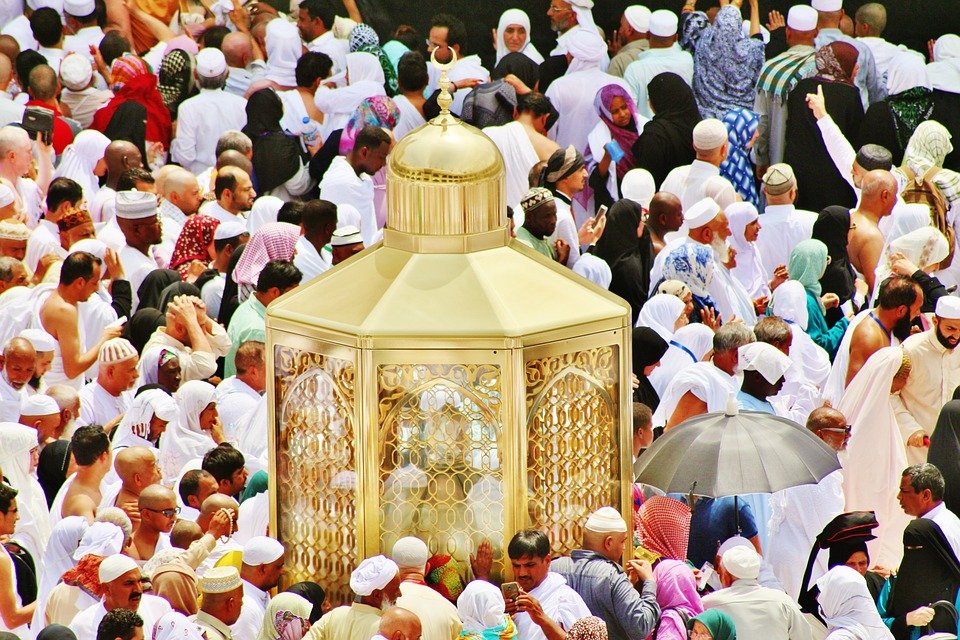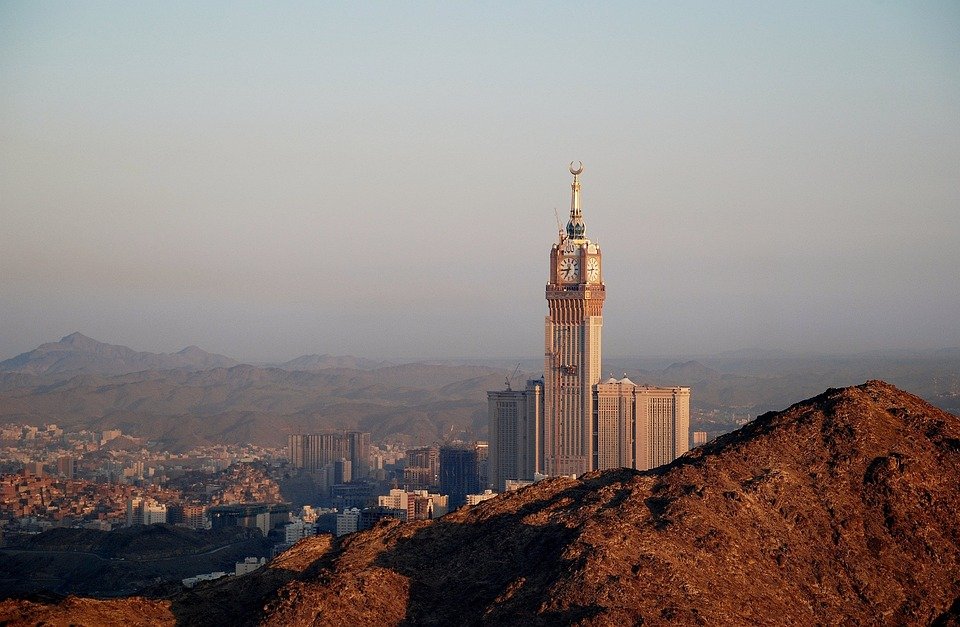You are here to read: How Much People Go to Hajj: Insights and Trends Explained – A Thoughtfully Written Guide Offering Spiritual Wisdom and Travel Advice for Every Pilgrim who is going on holy journey of Hajj or Umrah.
In this article, we will explore how much people go to Hajj, an essential pilgrimage in Islam that draws millions each year. Around two million pilgrims attend this sacred event annually, illustrating the profound devotion and spiritual commitment of Muslims worldwide. I think understanding the statistics and significance surrounding Hajj can deepen our appreciation for this remarkable experience. As you read further, you’ll find a comprehensive guide that answers all your questions about how much people go to Hajj, including insights into the trends and dynamics that shape this annual gathering.
The significance of how much people go to Hajj extends beyond mere numbers; it reflects the unity, faith, and collective spirit of the Muslim community. In my opinion, each person’s participation signifies much more than attendance; it symbolizes a deep spiritual journey that leaves lasting impacts on their lives. With over nine years of expertise in the Hajj and Umrah travel sector since 2016, we at Airlink Hajj and Umrah are well-equipped to provide valuable insights on “How Much People Go to Hajj: Insights and Trends Explained.” I feel confident that our thorough understanding of this sacred pilgrimage will enhance your knowledge and appreciation of its importance.
How Much People Go to Hajj: Insights and Trends Explained
Understanding Hajj and Its Significance
Hajj is a very special pilgrimage that Muslims must complete at least once in their lifetime. It takes place in the holy city of Makkah, Saudi Arabia, during the month of Dhul-Hijjah. Millions of people from around the world gather to perform this sacred act. Each willing participant follows a set of rituals that connect them deeply to their faith. The idea of tens of thousands of people attending is awe-inspiring, and it brings an unmistakable sense of unity among Muslims globally.
The feeling of being part of something bigger is remarkable. People travel from distant lands—some going by plane, others by land. Regardless of their method of transport, every single person shares a common goal: to fulfill their spiritual obligation. Many pilgrims spend years preparing for this trip, saving money, and learning about the rituals. It’s not just about the destination; it’s about faith and personal growth.
The Numbers Game: How Many Go Each Year
Hajj attracts a staggering number of participants annually. In recent years, estimates have suggested that upwards of two million people make the pilgrimage every year. This number can fluctuate due to various factors, like health guidelines or travel restrictions. Nonetheless, the eyewitness accounts of such a massive gathering paint a vivid picture of joy and reverence.
Statistics reveal that the number of pilgrims often peaks during certain years, especially when special events or anniversaries occur in the Islamic calendar. For example, the year of the COVID-19 pandemic saw a significant decrease in attendees, emphasizing how external circumstances can affect this spiritual experience. Understanding these trends can offer insight into the future of Hajj and its role in the lives of millions.
Challenges Facing Pilgrims
Attending Hajj is not without its challenges. First and foremost, the logistics of traveling such long distances can be overwhelming. Many individuals and families spend years preparing both spiritually and financially. This planning often includes setting aside funds for travel and accommodation, which can be quite high in Saudi Arabia during the pilgrimage season.
You're at the middle of this awesome post at AirlinkHajjandUmrah.com through: How Much People Go to Hajj: Insights and Trends Explained. Keep reading, it gets better!
Additionally, the intense heat and the sheer number of people can create physical challenges. Pilgrims must be prepared for long days filled with walking and standing during rituals. It’s vital to stay hydrated and take care of one’s health. Health guidelines have become more critical than ever, especially with increased global health awareness. Being aware of these challenges allows everyone to approach the pilgrimage with a sense of readiness, ensuring a fulfilling experience.
The Role of Technology in Hajj
In today’s digital world, technology plays an essential role in the Hajj experience. Mobile applications help pilgrims with discovering prayer times, navigation, and more. Many apps provide information about the rituals, rules, and even nearby facilities. Having these resources at our fingertips makes a complicated pilgrimage seem more manageable.
Moreover, online platforms allow pilgrims to share their experiences in real-time, connecting friends and families not just during the event but also across continents. This form of interaction makes the journey feel communal, even from afar. As technology continues to advance, it shapes how people prepare for and experience Hajj in ways we are only beginning to grasp.
Understanding the Pilgrim Demographics
The diversity of the Hajj attendees is truly fascinating. People from various countries, cultures, and backgrounds come together for a common purpose. In fact, this diversity is one of the strongest aspects of Hajj. Individuals of all ages—including families, the elderly, and youth—join hands in faith.
Recent trends indicate that more younger people are participating. They carry a thirst for spirituality and a desire for strong community ties. In my opinion, this growing demographic could change the face of Hajj in the future. As these younger pilgrims share their experiences, they bring fresh perspectives and ideas that can enrich the overall atmosphere, making it even more exciting.
The Spiritual Side of Attendance
For many, the spiritual journey of attending Hajj is what truly counts. Each ritual performed carries deep significance and connects the pilgrims not just to their faith, but to each other. Witnessing millions of individuals participating in the same acts of worship can lead to profound realizations about faith and unity.
As we immerse ourselves in these acts of devotion, emotions often surge. It’s a time for self-reflection, repentance, and asking for forgiveness. Many have shared how attending Hajj has fundamentally changed their outlook on life. The powerful lessons learned are carried long after the pilgrimage concludes, shaping how individuals interact with their communities and navigate life’s challenges.
The Future of Hajj Attendance
Looking ahead, the future of Hajj attendance remains intriguing. As global circumstances evolve, the number of pilgrims can change. A stronger focus on sustainability in travel may also play a part in how people plan for Hajj in years to come. Environmentally friendly travel options and ethical tourism practices might gain momentum.
Education about the importance of Hajj will continue to be vital too. Joint efforts by communities and organizations could pave the way for more people to attend. In my view, as more share their experiences and insights, the awareness of Hajj will grow, creating even more opportunities for connection. In essence, the spiritual essence of Hajj thrives on conversations that bring hope and understanding for generations to come.
In conclusion, Hajj is a magnificent event that transcends borders and cultures. Whether it’s the numbers, the challenges, or the spiritual awakening, every aspect contributes to the significance of this sacred pilgrimage. Each year, we witness not just the quantity, but the quality of experiences shared, reminding us of the profound impact that attending Hajj can have on individuals and communities alike.
That wraps up How Much People Go to Hajj: Insights and Trends Explained. Thanks for sticking with us till here! Share this: How Much People Go to Hajj: Insights and Trends Explained with your friends.
Check our homepage at Air Link Hajj & Umrah for more awesome updates.
Some interesting posts are: 1: Umrah Mubarak, 2: When is Umrah closed 2026?, 3: When does Umrah start after Hajj 2026?
Mushu, an experienced Saudi Arabia traveler and writer, shares insightful tips and spiritual reflections to enhance Hajj and Umrah journeys for fellow pilgrims. He has been to Makkah and Madina from 2016 to 2023 many times and his posts will reflect this.







